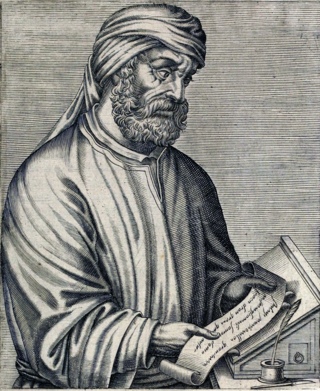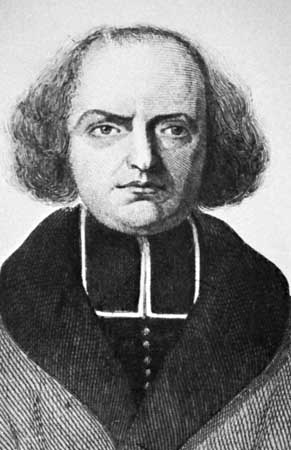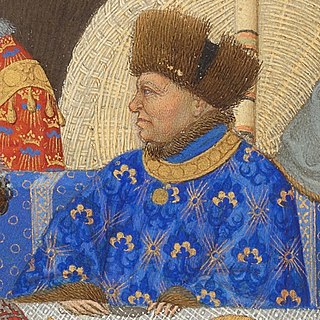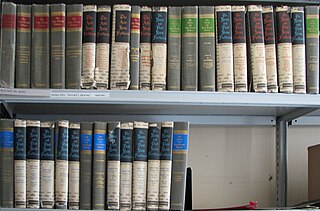
Ossian is the narrator and purported author of a cycle of epic poems published by the Scottish poet James Macpherson, originally as Fingal (1761) and Temora (1763), and later combined under the title The Poems of Ossian. Macpherson claimed to have collected word-of-mouth material in Scottish Gaelic, said to be from ancient sources, and that the work was his translation of that material. Ossian is based on Oisín, son of Fionn mac Cumhaill, a legendary bard in Irish mythology. Contemporary critics were divided in their view of the work's authenticity, but the current consensus is that Macpherson largely composed the poems himself, drawing in part on traditional Gaelic poetry he had collected.

Tertullian was a prolific early Christian author from Carthage in the Roman province of Africa. He was the first Christian author to produce an extensive corpus of Latin Christian literature and was an early Christian apologist and a polemicist against heresy, including contemporary Christian Gnosticism.

Jacques Paul Migne was a French priest who published inexpensive and widely distributed editions of theological works, encyclopedias, and the texts of the Church Fathers, with the goal of providing a universal library for the Catholic priesthood.

Jean Bodin was a French jurist and political philosopher, member of the Parlement of Paris and professor of law in Toulouse. Bodin lived during the aftermath of the Protestant Reformation and wrote against the background of religious conflict in France. He seemed to be a nominal Catholic throughout his life but was critical of papal authority over governments and there was evidence he may have converted to Protestantism during his time in Geneva. Known for his theory of sovereignty, he favoured the strong central control of a national monarchy as an antidote to factional strife.
Marcionism was an early Christian dualistic belief system that originated with the teachings of Marcion of Sinope in Rome around 144 AD. Marcion was an early Christian theologian, evangelist, and an important figure in early Christianity. He was the son of a bishop of Sinope in Pontus. About the middle of the 2nd century (140–155) he traveled to Rome, where he joined the Syrian Gnostic Cerdo.

John of Berry or John the Magnificent was Duke of Berry and Auvergne and Count of Poitiers and Montpensier. His brothers were King Charles V of France, Duke Louis I of Anjou and Duke Philip the Bold of Burgundy. He was Regent of France from 1380 to 1388 during the minority of his nephew Charles VI.

JeanFouquet was a French painter and miniaturist. A master of panel painting and manuscript illumination, and the apparent inventor of the portrait miniature, he is considered one of the most important painters from the period between the late Gothic and early Renaissance. He was the first French artist to travel to Italy and experience first-hand the early Italian Renaissance.

Sainte-Geneviève Library is a university library of the universities of Paris, administered by the Sorbonne-Nouvelle University located at 10, place du Panthéon, across the square from the Panthéon, in the 5th arrondissement of Paris.
Virgilius Maro Grammaticus, known in English as Virgil the Grammarian or Virgil of Toulouse, is the author of two early medieval grammatical texts known as the Epitomae and the Epistolae.

Patristics or patrology is the study of the early Christian writers who are designated Church Fathers. The names derive from the combined forms of Latin pater and Greek πᾰτήρ (father). The period of the Church Fathers, commonly called the Patristic era, is generally considered to run from the end of New Testament times or end of the Apostolic Age to either AD 451 or to the Second Council of Nicaea in 787.

Beatus Rhenanus, born as Beatus Bild, was a German humanist, religious reformer, classical scholar, and book collector.

Corbie Abbey is a former Benedictine monastery in Corbie, Picardy, France, dedicated to Saint Peter. It was founded by Balthild, the widow of Clovis II, who had monks sent from Luxeuil. The Abbey of Corbie became celebrated both for its library and the scriptorium.

Denis Pétau, also known as Dionysius Petavius, was a French Jesuit theologian.

Gagny is a commune in the eastern suburbs of Paris, France. It is located 14.2 km (8.8 mi) from the center of Paris.

Sources Chrétiennes is a bilingual collection of patristic texts founded in Lyon in 1942 by the Jesuits Jean Daniélou, Claude Mondésert, and Henri de Lubac. Citations to the series are commonly made by the letters SC followed by the volume number.
Armand-Benjamin Caillau was a French Catholic priest, a missionary and writer.
Augustin Blondel de Gagny was a French connoisseur of the arts and a collector whose series of Paris auction sales, which took place soon after his death were high-water marks of the history of collecting in 18th-century France. Paintings and sculptures that passed through Blondel de Gagny's collection are dispersed in many of the world's great museums. The prints from his collection are less easily traced.

The Church Fathers, Early Church Fathers, Christian Fathers, or Fathers of the Church were ancient and influential Christian theologians and writers who established the intellectual and doctrinal foundations of Christianity. The historical period in which they worked became known as the Patristic Era and spans approximately from the late 1st to mid-8th centuries, flourishing in particular during the 4th and 5th centuries, when Christianity was in the process of establishing itself as the state church of the Roman Empire.
Jean-Baptiste Chabot was a Roman Catholic secular priest and the leading French Syriac scholar in the first half of the twentieth century.

Jean de Vignay (c. 1282/1285 – c. 1350) was a French monk and translator. He translated from Latin into Old French for the French court, and his works survive in many illuminated manuscripts. They include two military manuals, a book on chess, parts of the New Testament, a travelogue and a chronicle.














